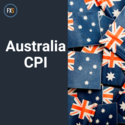The FOMC statement had small tweaks to the language but the most important sentence - that the FOMC can be patient in beginning to normalize the stance of monetary policy - was repeated. This in effect means that rate hikes are off the table at the March and April meetings. The vote was unanimous, but note that the three dissenters from December have all become non-voting members after the annual rotation of voting rights at the FOMC.
One notable change in the statement is that international developments are now mentioned directly as a part of what the FOMC watches in determining how long to maintain the fed funds rate at the current level. What exactly is meant by this phrase is unclear, but the most obvious is global economic developments. Whether it also refers to central bank actions and their impact on the US dollar is more unclear. The minutes released in three weeks will make us wiser.
Otherwise, the statement acknowledges the downward trend in inflation and the drop in market based inflation expectations, but remains of the view that it is driven by transitory effects. The statement repeats that the FOMC expects inflation to rise gradually toward 2 percent, but adds, over the medium term.
The description of the job market was upped and notably the statement didn’t mention the December decline in average hourly earnings. Instead, job gains were described as strong (compared to solid in December) and underutilisation of labour resources continued to decline.
This leaves us with an FOMC which seems ready to hike rates despite low and declining inflation, if it is convinced that inflation will pick up later and the labour market will continue to improve. However, the mentioning of global economic developments suggests that it might not be enough for the FOMC that the domestic economy is on track, if global economic growth is faltering. This raises the likelihood of a later hike than we currently anticipate (June 2015).
Key data to watch this week is the Employment Cost Index released together with Q4 GDP data on Friday. This will give us more correct data on wage inflation and show whether the latest employment report's steep drop in average hourly earnings was a fluke. If the index shows a similar decline in wage growth, we will reconsider our call for a June rate hike, but for now stick to our view.
This publication has been prepared by Danske Bank for information purposes only. It is not an offer or solicitation of any offer to purchase or sell any financial instrument. Whilst reasonable care has been taken to ensure that its contents are not untrue or misleading, no representation is made as to its accuracy or completeness and no liability is accepted for any loss arising from reliance on it. Danske Bank, its affiliates or staff, may perform services for, solicit business from, hold long or short positions in, or otherwise be interested in the investments (including derivatives), of any issuer mentioned herein. Danske Bank's research analysts are not permitted to invest in securities under coverage in their research sector.
This publication is not intended for private customers in the UK or any person in the US. Danske Bank A/S is regulated by the FSA for the conduct of designated investment business in the UK and is a member of the London Stock Exchange.
Copyright () Danske Bank A/S. All rights reserved. This publication is protected by copyright and may not be reproduced in whole or in part without permission.
Recommended Content
Editors’ Picks
AUD/USD rises to two-day high ahead of Aussie CPI

The Aussie Dollar recorded back-to-back positive days against the US Dollar and climbed more than 0.59% on Tuesday, as the US April S&P PMIs were weaker than expected. That spurred speculations that the Federal Reserve could put rate cuts back on the table. The AUD/USD trades at 0.6488 as Wednesday’s Asian session begins.
EUR/USD holds above 1.0700 on weaker US Dollar, upbeat Eurozone PMI

EUR/USD holds above the 1.0700 psychological barrier during the early Asian session on Wednesday. The weaker-than-expected US PMI data for April drags the Greenback lower and creates a tailwind for the pair.
Gold price cautious despite weaker US Dollar and falling US yields

Gold retreats modestly after failing to sustain gains despite fall in US Treasury yields, weaker US Dollar. XAU/USD struggles to capitalize following release of weaker-than-expected S&P Global PMIs, fueling speculation about potential Fed rate cuts.
Ethereum ETF issuers not giving up fight, expert says as Grayscale files S3 prospectus

Ethereum exchange-traded funds theme gained steam after the landmark approval of multiple BTC ETFs in January. However, the campaign for approval of this investment alternative continues, with evidence of ongoing back and forth between prospective issuers and the US SEC.
Australia CPI Preview: Inflation set to remain above target as hopes of early interest-rate cuts fade

An Australian inflation update takes the spotlight this week ahead of critical United States macroeconomic data. The Australian Bureau of Statistics will release two different inflation gauges on Wednesday.